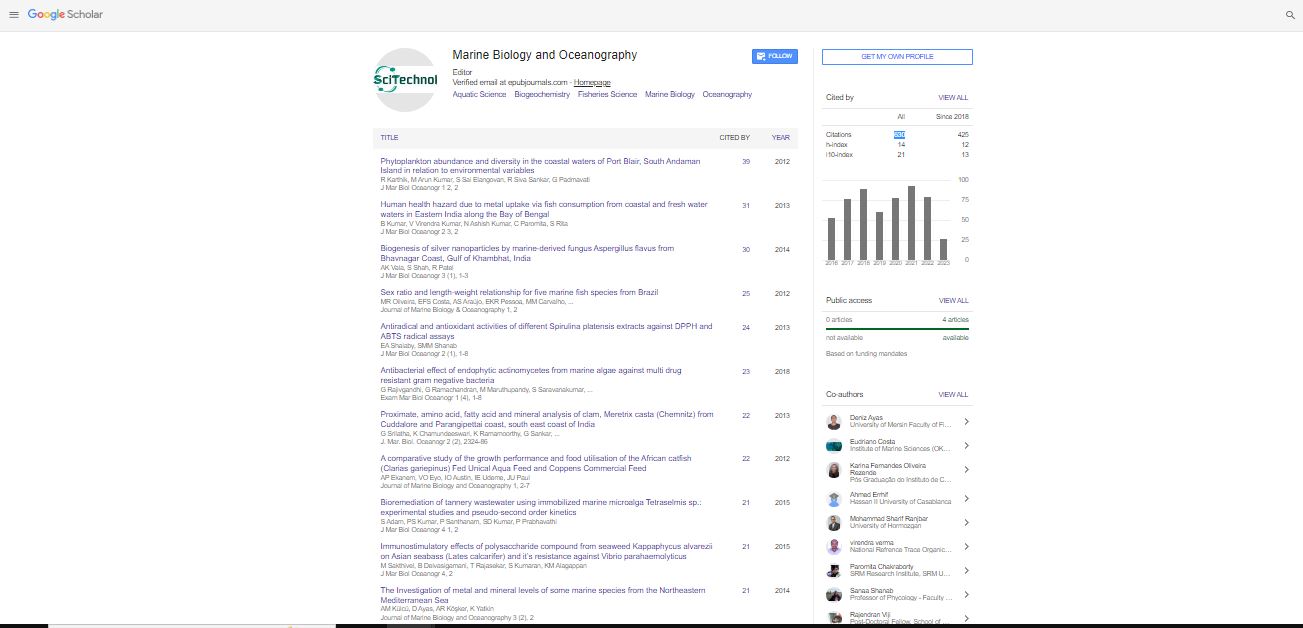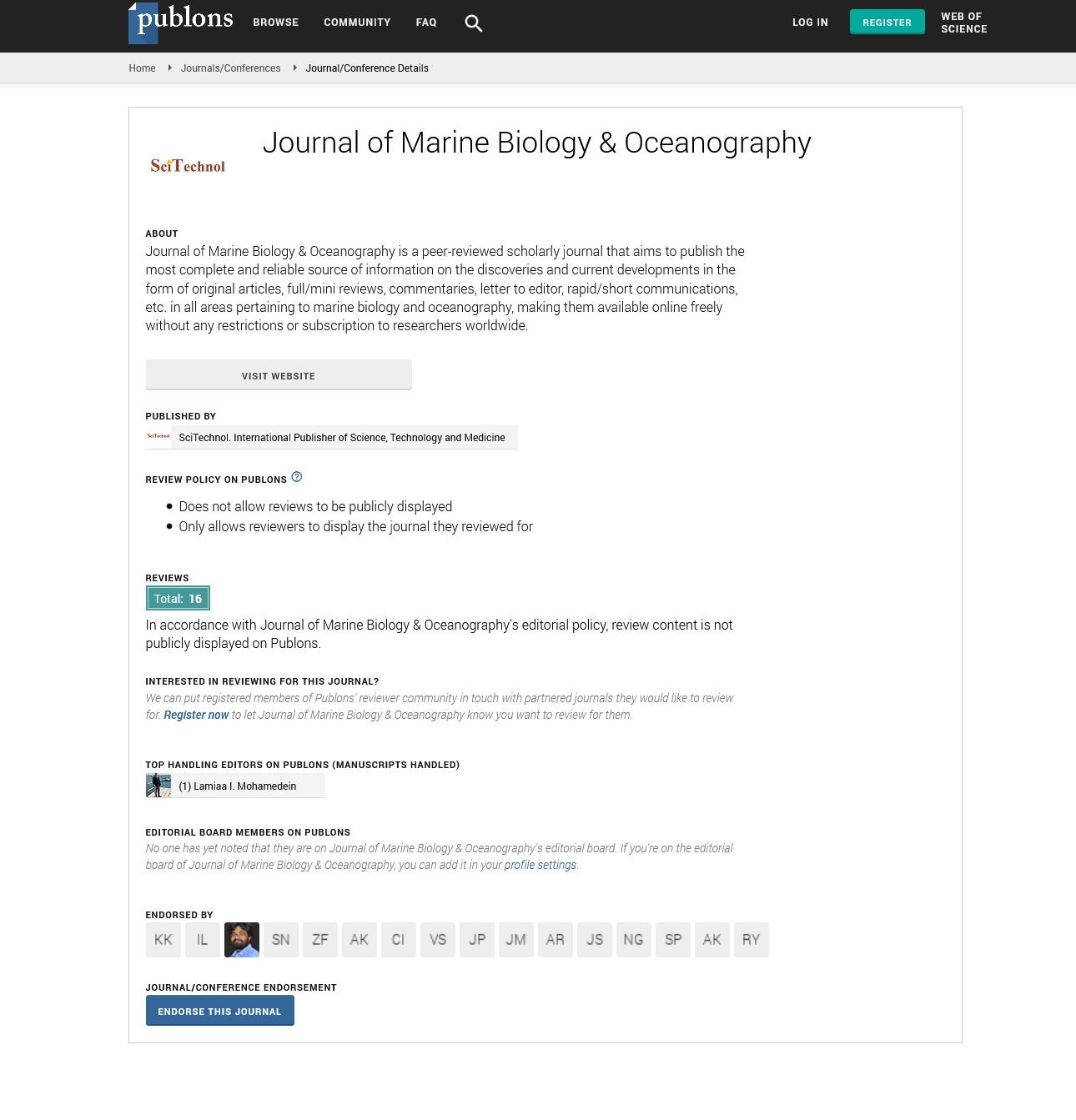The importance of seagrass meadows to human livelihoods & ecosystems services for Pacific islands
Shalini Singh
University of the South Pacific, Fiji Islands
Fiji National University, Fiji Islands
: J Mar Biol Oceanogr
Abstract
Seagrasses are marine flowering plants, similar to terrestrial plants, capable of reproducing sexually and asexually. They often form large meadows along coastlines of every continent except Antarctica with the highest biodiversity found in Indo-Pacific region. Seagrasses provide vital functions in the marine environment supporting commercial and subsistence fisheries and biodiversity, stabilizing shorelines, preventing coastal erosion, improving water quality, and capturing and storing a large amount of carbon from the atmosphere. Globally seagrasses have declined in area by ~ 30 percent since the beginning of the twentieth century and this is considered to be speeding up in recent years. Scientists attribute this decline to poor water quality, caused by polluted land run-off especially nutrients and sediments being washed down river and into coastal habitats. Excess sediment causes water to become murky preventing sunlight penetration to seagrass blades, which eventually die as they can no longer photosynthesize. In the Pacific Island region seagrasses habitats are far less studied than other marine ecosystems like coral reefs and information about them is severely lacking. In addition, their nearshore location makes seagrasses habitats highly vulnerable to human induced disturbances, especially impacts related to population increases resulting in urban expansion, climate change and increased loading of sediments, pollutants and algal generating nutrients. Managing seagrass ecosystems in the Pacific Islands requires filling gaps in our knowledge and understanding of natural change and resilience, land run-off and significantly improved awareness of the high value of this natural resource.
Biography
E-mail: sophie.shalinisingh@gmail.com
 Spanish
Spanish  Chinese
Chinese  Russian
Russian  German
German  French
French  Japanese
Japanese  Portuguese
Portuguese  Hindi
Hindi 
